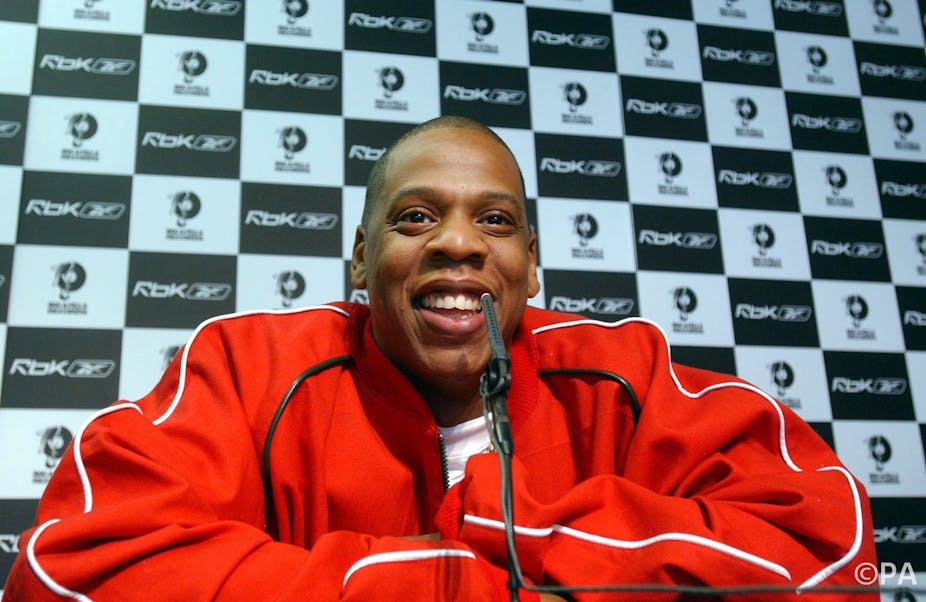Artists including Beyonce, Daft Punk, Usher, Nicki Minaj, Rihanna, Kanye West and Madonna recently joined Jay Z in New York to launch Tidal, his artist-owned streaming service.
Their two targets, poor audio fidelity and a loss of artist control, indicate a dissatisfaction with the way that consumers are treating music. The Tidal revolution hopes to convince consumers that music and creativity can be better in the age of digital streaming. Yet within a day of the announcement there has already been significant backlash.
The internet is awash with scepticism of Tidal’s revolutionary claims. Though judgement should be reserved for a year or two, first impressions don’t look good. For many music fans, Tidal presents an elitist call to reverse the more democratic music revolution of the early 2000s.
Whilst Tidal’s website places focus on music fidelity, its publicity has veered more towards a story of revolutionary social justice for the arts. Tidal is framed as streaming service owned by artists. Their videos subtly rail against the use of their music as something to encourage advertising revenue or the sale of a new gadget. This publicity implies that consumers are getting music wrong. They’re listening at too low a quality, they’re paying too low a price and they’re consuming in spaces owned by the wrong people. As a result the “sanctity” of music has been lost and creativity is under threat.
Holy melody
Admittedly, the sanctity of music has taken a beating over the past two decades. The explosion of music piracy in the late 1990s lead to the dismantling of the album retail model with iTunes, and the development of music as a service via Spotify. What was lost was the framing of music as a high-value commodity object. Many blame these industry outsiders, Spotify in particular, for the financial and cultural devaluing of music, where artists are paid a per-stream pittance while album sales are cannibalised.
Tidal’s aim is to wrest back artists’ control over music from the current streaming model, reclaiming lost industry territory.
Which sounds good. But Tidal is built around a centre of 16 “top-tier” artists – those present at the launch – who receive the highest proportion of royalties. And for many commentators, this makes Tidal a very suspect kind of artists’ commune. Their new way of consuming music may have the desired old-world values but it looks like it has old business interests too. Less like a grass-roots movement – and more a revolution of the rich.
So far Tidal’s only concrete commitment to its “artists-first” philosophy is the top-tier’s stake in the company. This is a commune shaped around the creativity of its members. Details on how “lower-tier” artists will also share in Tidal’s wealth and influence haven’t been made public. For many, the current model indicates that industry status is likely a key factor. All this talk of “tiers” also seems to mean the commune will be hierarchical.
Was piracy positive?
The digital distribution of music via the internet fundamentally altered the music industry. Old models fell away as it was forced to merge with tech companies to survive. Consumers demanded new ways to listen to music outside of industry remit, and the industry was forced to comply.
Yet more importantly, digital distribution meant alternative channels for distribution too. Digital distribution supported a new ecosystem for independent artists to produce, distribute and promote their work without the labels. Artists were handed a degree of control and possibility that would not have existed had the CD remained king.
Paradoxically, for many, piracy in the 2000s represented a pro-artist position. Piracy sought to topple a model that was inherently restrictive and exploitative. Top-tier artists were considered complicit in that restrictive model –and high-profile artists began vocally and legally attacking their fans. Piracy was an encouragement to challenge the necessity of music as commodity and the vast disparity between music superstars and the struggling artist.
Consumers pirated the top hits, complaining about price-fixing and industry fat cats. Alongside, a host of direct artist-to-fan experiments began to lay the groundwork for an alternative, revolutionary music economy. Digital distribution wasn’t just about free music or streaming, it was a fundamental shift in creative power.
Those that Tidal is working against arguably better represent “artist-first values”. Though not a streaming service, Bandcamp embodies the potential of a democratised and participatory cultural industry. The platform offers artists control over their own corner of the site where they can sell their own music and merchandise. Artists control the minimum price, though fans are given the opportunity to over-pay. There is no standing charge or contracts. Artists only pay fees after they’ve begun to make money and anyone can sign up. Revenue from sales goes direct to the artists, with Bandcamp making its 10-15% by occasionally taking the full revenue of a sale to clear an accrued debt.
Sites such as Bandcamp make music that would be unprofitable to a record label, profitable to the artist. They foster creativity of niche genres and experimental forms, and provide artists control rather than loans and contracts. Admittedly artists aren’t offered a stake in the company, but with Bandcamp paying out $100m to artists since 2008, it may not need to.
So if Tidal’s top-tier believe the music industry needs a real revolution, perhaps they should drop their label and join Bandcamp instead.

